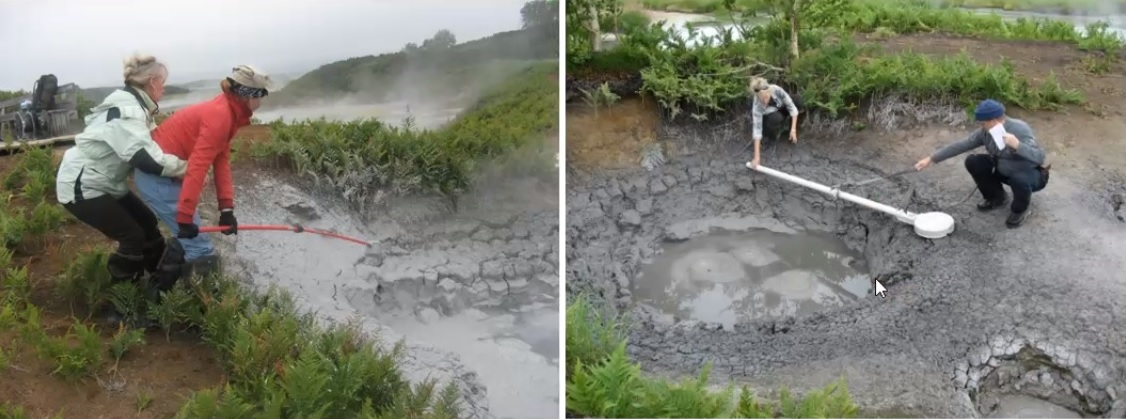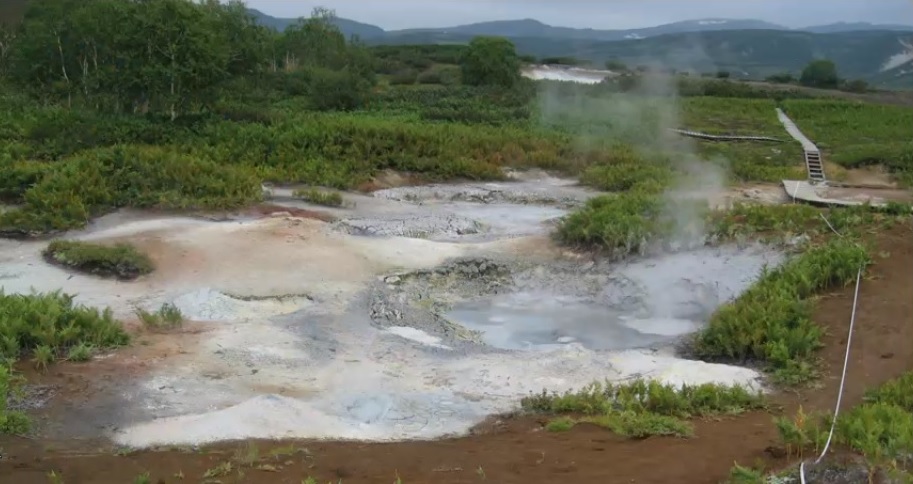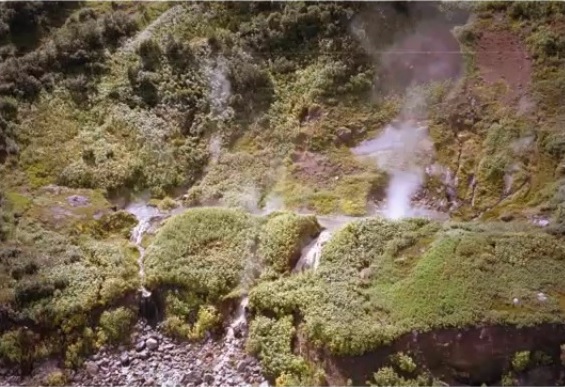Scientists from the Trofimuk Institute of Petroleum Geology and Geophysics, Siberian Branch of the Russian Academy of Sciences (IPGG SB RAS) have investigated the structure of discharge paths of hydrothermal fluids on a number of active volcanoes (Karymsky, Uzon and Mutnovsky) in Kamchatka. The research is based primarily on electrical resistivity data and results of geochemical studies. Sofia Kohanova, a research scientists from the Laboratory of ecological and economic modeling of technogenic systems, told us about some of the laboratory’s achievements.
Topicality of the research
The volcanologists emphasize the importance of the information on modern hydrothermal manifestations on active volcanoes. A deeper understanding of the mechanisms of the formation of geothermal systems allows us to determine the origin of thermal fields and the internal structure of volcanos and their hydrothermal (fluid circulation) systems.
Practical implications of the research include the possibility of determination of the geometry of gas-geothermal zones and geothermal reservoirs using electrical resistivity techniques.
- The methodology can be utilized in exploration and exploitation of geothermal energy. Besides, the information obtained may add to the safety of tourist routes, - says Sofia Kohanova.

The IPGG scientists collecting samples from mud pots (left) and conducting geophysical survey (right) within the Uzon caldera (Kamchatka)
IPGG’s contribution to the research
The IPGG scientists constructed the geoelectric models from geoelectric sections of the thermal fields of three volcanoes, specifically, for: (i) the Donnoe fumarolic field of Mutnovsky volcano; (ii) boiling mud pots in the Uzon caldera; (iii) Akademii Nauk geysers and Medvezhie springs. Also, a three-dimensional model of Tokarev crater in the Academii Nauk caldera was built, and samples of thermal waters were collected, with their parameters and anion content measured.
The task of geophysical studies included electromagnetic profiling and resistivity measurements within the investigated thermal fields. Using the IPGG’s proprietary software, the researchers performed primary processing of the electrical survey data, with their subsequent inversion and final visualization (modeling). The results were also supplemented by laboratory analyses and experiments were.

Mud pots at thermal sites in the Uzon caldera
Scientific inferences drawn by researchers
It has been established that discharge of high-mineralized acid solutions of boiling mudpots occur on stable open fracture channels linked with sources of magma gas and fluids.
Results of the study of Mutnovsky volcano revealed that the solid crust capping the solution reservoir at the fumarole site is not more than 5 m in thickness, and locally closely approaches the surface. This raises the question as to whether it is safe to walk in this area.
It is also worth nothing that the pattern of thermal springs changed after the 1996 tectonic event occurred in the Lake Karymskoye area. Thus, the new large Novy geyser spring and Medvezhie springs appeared. It is possible that the Akademii Nauk geysers are fed from a deep source associated with the earthquake epicenter.
The researchers believe that, specifically, the 1996 tectonic event may have caused both structural changes beneath Lake Karymskoye, and emergence of a channel feeding the newly formed springs.
In the future, IPGG scientists plan to continue research on thermal fields of Kamchatka.

Thermal effects near Lake Karymskoye in Kamchatka
For reference
The research results that served the basis for S.P. Kohanova’s Candidate Sci. (Tech.) thesis (specialty 1.6.9.: Geophysics) were presented at the geophysical seminar of IPGG SB RAS.
Published by IPGG Press Service
Photos courtesy of Sofia Kohanova